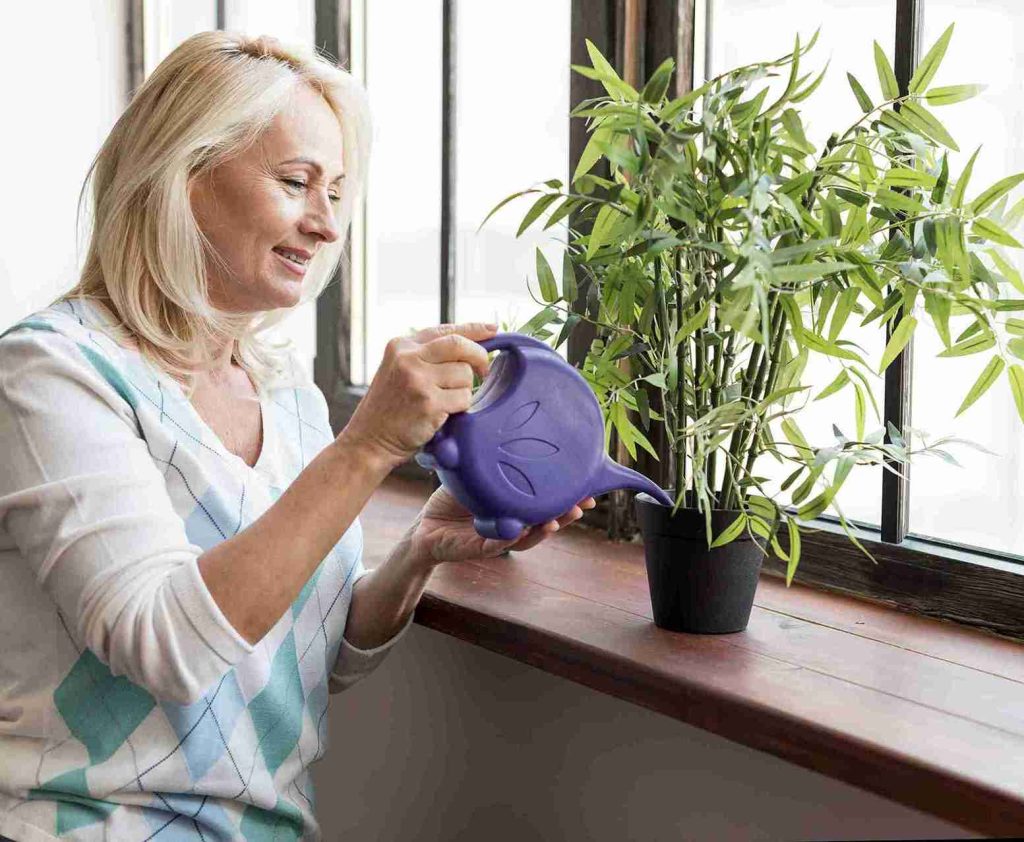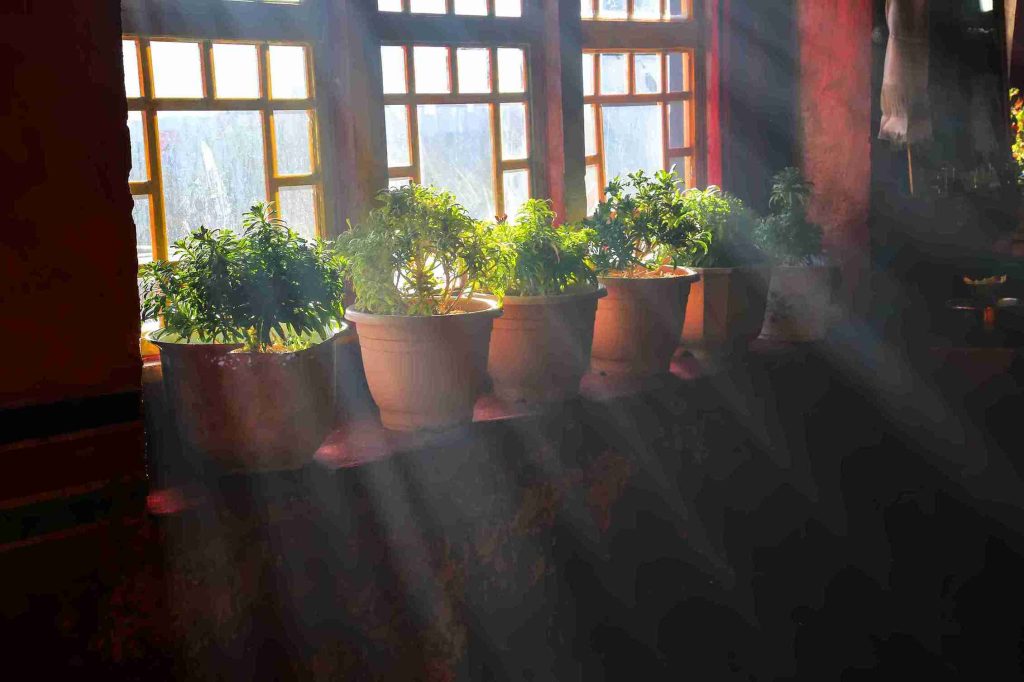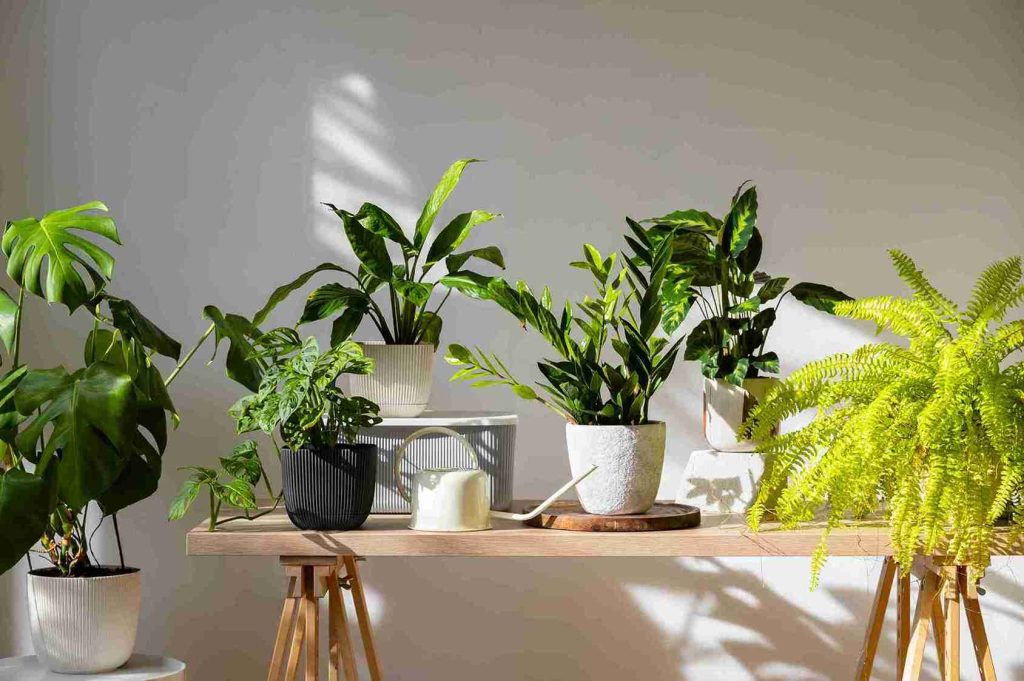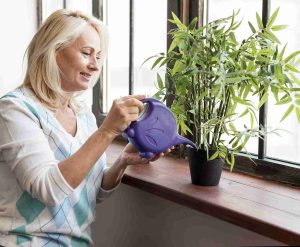When I first started taking care of houseplants, I didn’t realize how important the direction of the window was. I thought all plants just needed light. But I quickly learned that the south vs north-facing windows can make a big difference.
At first, I placed my plants near any window, but they didn’t seem to grow as well. Some got too much light, and others didn’t get enough. Over time, I realized that south-facing windows get the most sunlight, making them perfect for sun-loving plants. On the other hand, north-facing windows are cooler and get less direct light, which works better for plants that prefer indirect or low light.
If you’re confused about where to place your plants, don’t worry! In this article, I’ll share the pros and cons of south vs north-facing windows so you can give your plants the best spot to thrive.

Choosing the Right Spot
When I first started collecting plants, I was excited to find the perfect spot. I wanted my plants to thrive. But I didn’t know much about light. I thought any window would do. I quickly realized that the direction of the window matters a lot. My plants seemed to be struggling at first. I didn’t understand why.
Over time, I learned that sunlight, and where it comes from, plays a huge role in plant health. That’s when I started paying more attention to my windows. I learned that South-facing windows provide strong light, while North-facing windows offer less.
This made me curious about which one would be best for my plants. Would they do better in bright, intense light or in a more subtle glow? I wanted to figure this out so my plants could be happy and healthy.
Understanding the Role of Light
Before diving into the specifics of South and North-facing windows, it’s important to understand the role of light. Light is the food for plants, just like water and air. They need it to grow and stay healthy. But not all light is the same.
Plants use sunlight for photosynthesis, the process that allows them to create food. Some plants thrive in bright light, while others prefer low light. Too much or too little light can harm your plants. That’s why the direction of the window you choose for your plants is crucial. In my experience, each plant has its own needs.
Some love bright, direct sunlight, while others do better in the shade. Knowing these differences helped me make the right choices. With this knowledge, I could figure out where to place my plants for the best growth. Whether South or North, the window’s light is vital.
The Power of South-Facing Windows
South-facing windows are often the best for plants that love a lot of light. In my experience, these windows get the most sun throughout the day. The sunlight coming through is direct and intense.
This is perfect for sun-loving plants like succulents, cacti, and many tropical species. When I placed my plants by a South-facing window, I saw a big difference. The leaves looked greener, and they grew faster. The sunlight was strong enough to fuel their growth, and I noticed that these plants were much happier. However, I also had to be careful.
Sometimes, the light was so strong that it could burn the leaves. To avoid this, I moved the plants a bit further from the window during the hottest part of the day. Overall, South-facing windows are ideal for plants that need lots of light. But balance is key. Too much direct sun can cause stress, so always monitor your plants carefully.
North-Facing Windows: A Softer Touch
North-facing windows, on the other hand, offer a different kind of light. The sunlight coming through these windows is much softer and less intense. For many months, I kept a few plants near a North-facing window, expecting them to thrive.
At first, they seemed to be doing fine. However, after a while, I noticed that the plants weren’t growing as quickly as I had hoped. The leaves were still green, but they weren’t as vibrant. I realized that these plants weren’t getting enough light. While North-facing windows are great for plants that don’t need much light, they aren’t ideal for plants that require strong sunlight.
I found that plants like ferns, ivy, and some varieties of orchids did well here. But for other sun-loving plants, I had to find a brighter spot. If you have a North-facing window, it’s perfect for low-light plants, but you might need to supplement with a grow light for those that need more.
South vs North: Which Plants Thrive?
Over time, I noticed that the plants I placed by South-facing windows grew much faster. They got the light they needed to thrive. In contrast, the plants near the North-facing windows grew slower. However, they were still healthy, just not as fast-growing.
I realized that South-facing windows were best for plants that love a lot of light, like cacti, succulents, and herbs. These plants need a lot of direct sunlight, and the South-facing windows gave them exactly that. On the other hand, North-facing windows worked better for plants like peace lilies, snake plants, and ferns, which don’t need too much light to grow.
These plants were happy with the softer, indirect light. So, it became clear to me that the type of plant you have is a big factor in choosing the right window. Some plants need more sunlight, while others do just fine with less.

The Importance of Adjusting to Seasonal Changes
One thing I didn’t realize at first was that the intensity and angle of the light change with the seasons. In the summer, South-facing windows get a lot of direct sunlight, which is perfect for my sun-loving plants. However, in the winter, the angle of the sun changes, and the light becomes much weaker.
This can affect the plants I have near South-facing windows. They might not get as much direct sunlight during the winter months. Similarly, North-facing windows still provide consistent, though weaker, light throughout the year. I had to learn to adjust my plant care according to the seasons.
During the colder months, I moved my sun-loving plants a bit closer to the South-facing window. Meanwhile, I found that my low-light plants continued to do well in the North-facing window all year round. Understanding these seasonal changes helped me keep my plants healthy year-round.
Testing the Light: How to Tell if It’s Enough
After a few months of trial and error, I figured out a simple way to check if my plants were getting enough light. I started watching their growth patterns more carefully. Plants that didn’t get enough light were easy to spot.
They stretched out and became leggy, trying to reach for the light. Their leaves also started to look yellow. I also learned that if the plant is too close to the window, it might get burned. If it’s too far, it might not get enough light. I tested different spots in my home and moved my plants around until I found the right balance.
Sometimes, I would place a plant by the South-facing window for a few hours a day, then move it to a shaded spot for the rest of the time. With trial and error, I eventually figured out the perfect placement for each plant.
The Benefits of Natural Light vs. Artificial Light
While natural sunlight is always the best option for my plants, I’ve also tried using grow lights when necessary. Sometimes, the light in my home isn’t enough, especially during winter. I found that grow lights can be a good supplement when the sun isn’t strong enough.
However, no artificial light can match the natural light coming through a South-facing window. Grow lights are fine for small spaces or for specific plants, but nothing beats the warmth and intensity of real sunlight.
I noticed that plants with growth lights didn’t grow as strong or vibrant as those with natural sunlight. So, I always prefer to use natural light whenever I can. It helps plants grow healthier and look more beautiful.
Window Treatments: Managing Intensity
Sometimes, even with South-facing windows, the sun can be too intense. I realized that I could use curtains or shades to manage the light. By placing sheer curtains, I was able to filter the strong light, preventing my plants from getting sunburned.
This trick worked perfectly for some of my more delicate plants. With a slight reduction in sunlight, my plants were able to get enough light without the risk of burning. I also used blinds to adjust the amount of light coming in at different times of the day.
These little changes helped me create the perfect environment for my plants. Even with strong South-facing light, I could protect my plants and still give them what they needed.
North Facing Windows Plants
I’ve found that north-facing windows get the least direct sunlight. This means I need plants that can tolerate low light. Some plants that thrive in this kind of light are snake plants and pothos. I’ve had great success with peace lilies, too. They don’t need direct sun, just indirect light. Another plant that does well is the ZZ plant.
It grows slowly, but it’s perfect for low light. I’ve noticed that ferns also do well in these conditions. I water them regularly but not too much. The key is to avoid overwatering, as these plants don’t dry out quickly. I try to place the plants a few feet away from the window for indirect light. They still get enough light without being exposed to harsh rays.
I’ve learned that these plants don’t require a lot of care, but they still need attention. Overall, north-facing windows are great for low-light plants. They may not bloom or grow fast, but they stay healthy with minimal sunlight.
East-Facing Windows Plants
East-facing windows get gentle, morning sunlight, which is perfect for many plants. I’ve had success with a variety of plants here. One of my favorites is the spider plant. It loves the moderate light and grows quickly. I’ve also noticed that pothos thrives in the east-facing light. It grows beautifully without needing too much sun. A fern-like the Boston fern also does great here. It loves the indirect morning light and humidity.
I’ve placed succulents like the jade plant here too, and they’ve flourished. They don’t mind the morning sun but need to be careful not to get too much. I’ve also had success with African violets, which love bright, indirect light.
I make sure to water them carefully, as they don’t like being too wet. The plants in my east-facing windows stay healthy, and they don’t dry out too fast. I’ve learned that east-facing windows give plants the ideal balance of light and warmth. It’s a perfect spot for plants that need moderate light but not too much heat.
Best Plants for South-Facing Windows
South-facing windows are great for plants that love bright, direct sunlight. I’ve had great success with many sun-loving plants in this spot. One of my favorites is the fiddle leaf fig. It thrives in the intense light and grows rapidly. I’ve also found that succulents like aloe vera and echeveria love south-facing windows.
They get enough direct sunlight without burning. Another plant I keep there is the cactus. It’s perfect for the hot, direct sunlight. I also place a rubber plant in the south-facing window. It loves the bright light and grows tall. I make sure to water these plants less often, as they dry out quickly in direct sunlight.
I’ve noticed that they do well when the light is consistent throughout the day. I’ve tried plants like basil and tomatoes in this spot, and they do great. South-facing windows are perfect for plants that need a lot of sunlight. With proper care, they stay healthy, vibrant, and grow quickly.

Is South-Facing Window Good for Plants?
I’ve found that south-facing windows are great for sun-loving plants. They get the most direct sunlight throughout the day, which many plants need. If I have a plant that thrives in bright light, I place it here.
Plants like succulents, cactus, and fiddle leaf figs love the constant sunlight. However, I’ve learned that not all plants enjoy this amount of light. Some plants, like peace lilies, might get too much direct sun and burn. I make sure to monitor the light throughout the day. If the sunlight becomes too intense, I move the plants a little further back. I also keep an eye on the temperature, as direct sunlight can make the room hot.
Despite this, I’ve found that most sun-loving plants do best in a south-facing window. They get the warmth they need and grow faster. With the right care, I’ve had success with plants in south-facing windows, making them a great choice for many indoor plants.
Small Plants for East-Facing Window
East-facing windows are perfect for small plants that need moderate light. I’ve had great results with plants like the pothos. It loves the gentle, morning sunlight and grows quickly. Another small plant that does well here is the spider plant. It thrives in bright, indirect light and doesn’t need much attention.
I’ve also tried placing an African violet in this window, and it’s been growing beautifully. It loves the morning light and needs a little humidity. Another plant I recommend is the philodendron. It does well in east-facing light, growing steadily without needing too much sun. Small succulents like jade plants also do fine here.
They enjoy the morning sun but need to be careful not to get too much. I’ve learned that these small plants do best with consistent watering and the right light. They don’t dry out too quickly but still get enough light to grow healthy. An east-facing window is perfect for these smaller plants, giving them just the right amount of sunlight.
Conclusion
In the end, I learned that the best window for your plants depends on the type of plants you have. South-facing windows are best for those that need a lot of light, like succulents and cacti. North-facing windows are ideal for low-light plants, like ferns and snake plants. I found that it’s not about choosing one or the other, but about balancing the light needs of each plant. Over time, I’ve learned to adjust based on the seasons and the specific needs of my plants. It takes some trial and error, but with patience, you’ll find the perfect spot for every plant. Whether it’s South or North, the right light will make all the difference for your plants’ health and happiness.

FAQ
North-facing window disadvantages for plants
North-facing windows get less direct sunlight, which can limit growth. Many plants may struggle to thrive without enough light.
South vs north window for succulents
South-facing windows provide bright, direct light, ideal for succulents. North-facing windows offer less light, making them harder to grow.
Low light plants for north-facing window
North-facing windows are great for low-light plants like ferns. These plants thrive with indirect, softer light.
Full sun plants for the south window
South-facing windows get the most direct sunlight, perfect for full sun plants. These plants need strong light to grow well.
How much light does a north-facing window get
North-facing windows receive indirect light for most of the day. They get less light than east or west-facing windows.
How much sun does a south-facing window provide
South-facing windows get the most sunlight, especially in the afternoon. They provide direct sunlight for several hours daily.
Can you grow herbs in a north-facing window?
Growing herbs in a north-facing window can be difficult. Herbs need more light, so they may not thrive here.
Is a south-facing window too hot for plants?
South-facing windows can get very hot, especially in summer. Some plants may need protection from the intense sun.
North-facing window plant care tips
Keep plants near the window for the best light. Choose plants that thrive in low light and avoid overwatering.
South window vs north window for orchids
South-facing windows are better for orchids due to strong light. North-facing windows may not provide enough light for healthy blooms.
Indoor plant placement by window direction
Place light-loving plants in the south windows and shade-tolerant plants in the north windows. This ensures they get the right amount of light.
Difference between north and south window light
North-facing windows provide weaker, indirect light while south-facing windows offer strong, direct sunlight.
How to increase light in a north-facing room
Use reflective surfaces like mirrors to bounce light around. You can also add grow lights to boost light levels.
Are south-facing windows good for flowering plants?
Yes, south-facing windows provide the bright, direct light flowering plants need. They support healthy blooms and growth.
Shade-tolerant plants for north-facing windows
Plants like peace lilies and pothos do well in north-facing windows. These plants thrive in low to medium light conditions.
Window direction and plant growth comparison
South-facing windows offer the most sunlight, ideal for sun-loving plants. North-facing windows are better for shade-loving plants.
Tips for maximizing sunlight for indoor plants
Place plants near windows and use sheer curtains for filtered light. Reflect light with mirrors and consider grow lights for extra help.


